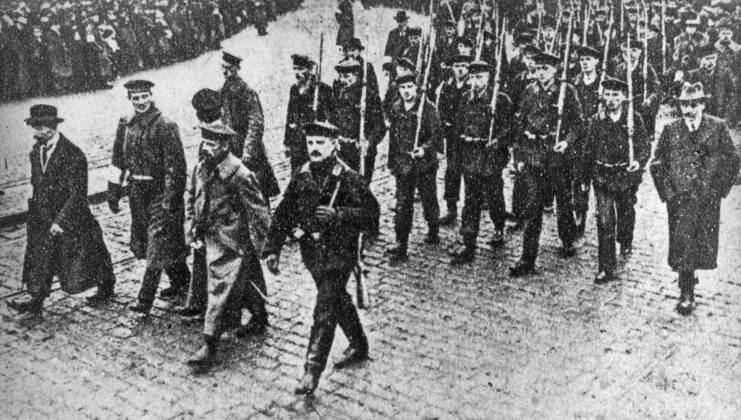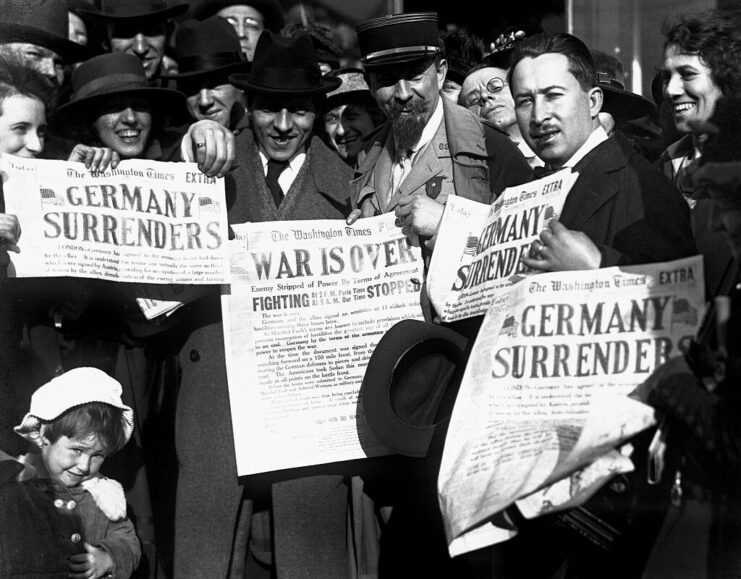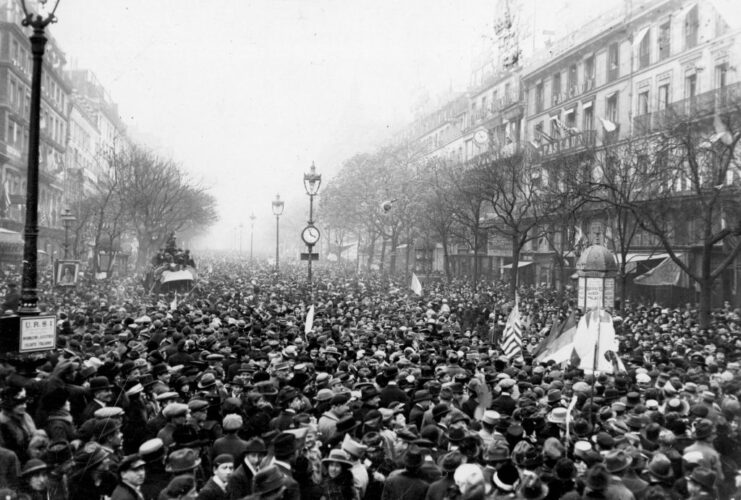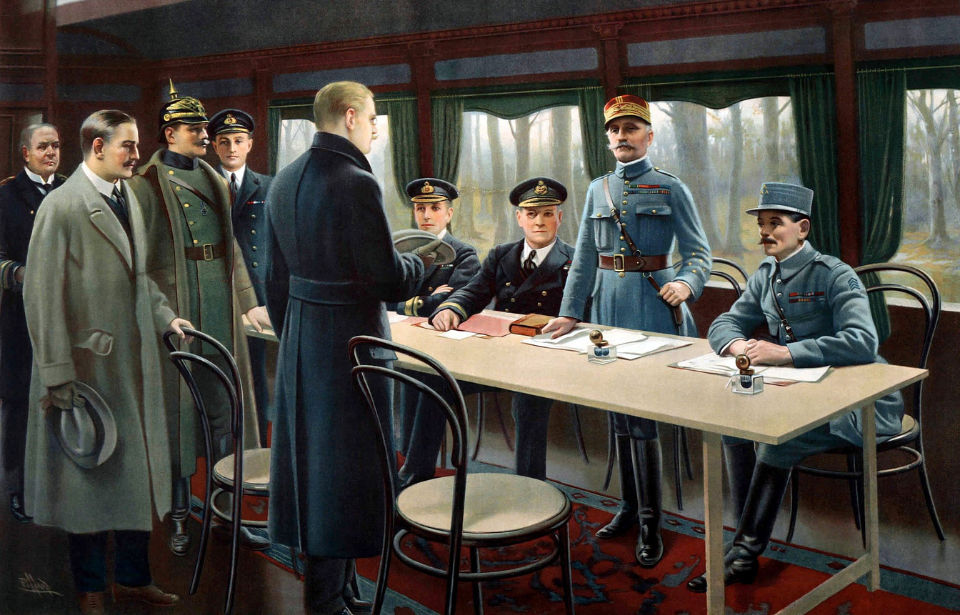The end of the Great War wasn’t the slam dunk history books and popular culture imply. The Allies wanted more from Germany than mere defeat: they wanted the nation to be appropriately punished for starting the conflict in the first place. They wanted to make an example, should any other European country think of going to war again; Britain, the United States and the other Allies wanted the world to know that starting another conflict of this magnitude wouldn’t be tolerated.
World War I continued after the Armistice was signed

While much about the Armistice and the subsequent Treaty of Versailles can be directly blamed for the Führer‘s rise to power less than two decades later, many factors contributed to World War I‘s slow end. Such conflict rarely just stops. More often than not, it grinds to a gradual cessation over a few days, at least.
The ceasefire was supposed to begin at 11/11/11: at 11:00 AM on the 11th day of the 11th month in 1918. The German Empire was in disastrous shape by then, but many in the Imperial Army and Navy didn’t want to accede; they wanted to keep fighting Britain on the open seas.
This led to the Kiel Mutiny, during which naval personnel openly defied their superiors who wished to keep fighting. They knew it was a lost cause. This prompted further rebellion among servicemen. To quell the growing disquiet, Kaiser Wilhelm II abdicated, shifting power to the Weimar Republic. Delegates were ordered to sign the surrender papers as quickly as possible, so word could spread that Germany’s war was over.
Germany was finished, but some Allied countries wanted it more severely punished, believing that only a “crushing” defeat could prevent another conflict elsewhere in Europe. While some were still arguing about the terms, the papers were signed, at 5:10 AM on November 18, 1918.
What did Germany’s surrender entail?

A great deal of the Armistice was based on US President Woodrow Wilson‘s Fourteen Points, which outlined terms he believed were reasonable. It included items that remain in existence to this day, such as self-determination and open democracy.
Germany was told to remove troops from occupied regions, and the Ottoman and Austro-Hungarian Empires were dissolved. New countries in the Middle East were to govern themselves, but few were actually able to do so without outside help from the United States and Europe.
Under the Treaty of Versailles, Germany was compelled to disarm; submarines were turned over to the Allied nations. It was also told to make substantial war reparations, among other requirements, which was a major reason for the country’s economic near-collapse in the 1920s.
What happened following the signing of the Armistice?

In cities like Paris, France, celebrating in the streets took the place of exhaustion and war-fueled anxiety, but for soldiers, things weren’t so clear-cut. Most German troops dropped their weapons in relief, but some who’d not heard of the ceasefire were killed after the 11:00 AM deadline because they hadn’t received word to stop fighting.
More from us: 24 Rare Photos That Give Us Another View of World War I
Want to become a trivia master? Sign up for our War History Fact of the Day newsletter!
A myth was born the day World war I ended: “stab-in-the-back.” Many right wing people in Berlin, Germany, and elsewhere said the country hadn’t lost. Instead, they claimed it was an untrue claim by the Weimar Republic, so it could seize power. It was a false narrative, but it gave rise to a failed art student who’d wrest control of the government and consolidate power under a new regime.
